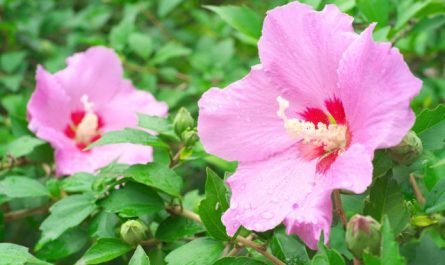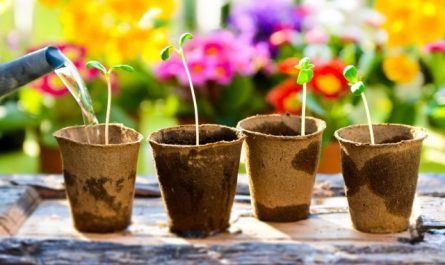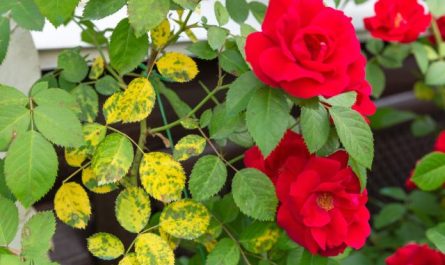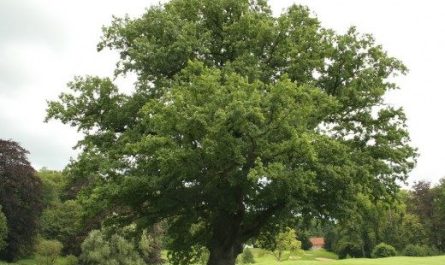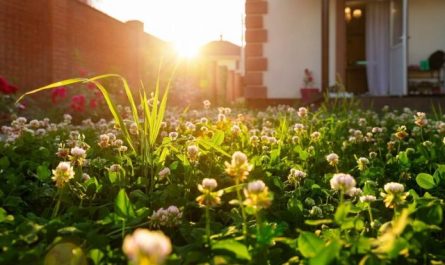Among garden plants, there are not many crops that attract not only honey plants, but also butterflies. One large perennial, cephalaria, can compete with autumn lilac and buddleia. Despite its status as a very promising crop, it is still considered a rarity in our gardens. Hardy and unpretentious, this giant beauty surprises with its size, wild character, and beautiful inflorescences. In this article, we will tell you about the most interesting types of cephalaria, their use in landscape design and growing features.

Botanical description of cephalaria
The popularization of landscape styles that imitate wild natural thickets has led to the growth of popularity of plants that were previously known only to very keen gardeners. One of these, undeservedly deprived of the attention of garden fashion, crops is cephalaria. This is a beautifully flowering, very large, hardy and unpretentious perennial. And all these qualities do not prevent the plant from remaining a wild and untamed candidate for placing vertical accents in landscape compositions.
Cephalaria are plants that have been in gardens for quite some time. In nature, they are found in southern European countries, the Caucasus and Crimea. But unlike most typical southern stars, cephalaria is so winter-hardy that it does not require any preparation for winter even in the middle zone and feels great in a climate that is far from usual for it. The popular name “Cephalaria” clearly indicates the shape of the inflorescences. Often, this plant is advertised as a giant yellow scabiosa.
Cephalaria are powerful, in every sense, rhizomatous herbaceous perennials that retain their decorative qualities for decades and do not require frequent renewal or rejuvenation. Strong, deep-lying rhizomes are striking in size and allow cephalaria not only to survive, but also to bloom in almost any conditions.
The shoots are powerful but thin, create loose, unevenly dense, bizarrely changing bushes-clumps, branch well, surprise with a color that exactly repeats the color of the greenery, and a hollow structure. The stems of cephalaria are leafless.
The leaves of the cephalaria are located in basal rosettes, creating a cushion above which the shoots-peduncles rise. They are pinnately dissected, large (up to 60 cm in length), richly dark green, creating a lush mass, against the background of which single inflorescences, sitting on thin peduncles, shine brightly.
Small ligulate and tubular flowers are collected in large inflorescence heads up to 6 cm in diameter. Externally, the flowering of cephalaria is very similar to scabiosa. All cephalarias bloom at the beginning of summer, in favorable weather – in May, surprising with their power and scope. Throughout the first half of the summer, huge bushes attract such a number of insects that it is sometimes difficult to distinguish the inflorescences themselves under them. The aroma of cephalaria is very gentle and delicate.
Cephalaria seeds ripen towards the end of summer, they are ribbed and oblong, hidden in large fruit capsules.

Types of cephalaria (head capitula)
Despite the fact that the genus of cephalaria is quite large, consisting of more than 60 species of plants, they are all strikingly similar in appearance. In ornamental gardening, only two species of cephalaria are used, distinguished by the most powerful bushes and the most decorative flowering.
Cephalaria is usually associated with Cephalaria gigantea (Cephalaria gigantea) is a powerful perennial, the height of which reaches an astonishing two meters. The leaves are very dark, densely located in a rosette, giving the whole plant a wildly neglected look. The inflorescences-heads are single, reminiscent of scabiosa, seem faded due to the pale yellow color.
Less common Cephalaria alpina (Cephalaria alpina) is a more vibrantly blooming species, with flowers that are not pale but richly lemon-colored. The heads are quite large and stand out against the dark greenery on the slender peduncles. The alpine capitula can also reach a height of two meters.


Using capitula in landscape design
Cephalaria are among the most unusual and powerful perennials. They are large vertical accents and soloists, capable of changing the boring structure of any ensemble and bringing life to the vertical relief of any object.
Cephalaria looks great in the garden:
- as a soloist on lawns or against the background of clearings of ground cover plants;
- as a high accent in natural plantings and arrays;
- as a complement to spectacular shrubs in groups;
- as an accent on flower beds or in the background of mixborders;
- as a camouflage plant;
- in protective or concealing plantings along walls and fences;
- as an accent in any place where interesting solutions are lacking.
When using cephalaria, it is worth considering the nature of the plant: despite the beauty of flowering, it still always looks untamed, a wild giant, as if it was transferred from the natural environment, and not as a cultivated plant. Cephalaria are crops for the landscape style of landscape design and country style with its unbridled solutions and choice of nostalgic plants.

They are also planted in special flower beds for birds – plantings that attract useful birds. They can be planted both as a honey crop and as a plant that allows you to fill the garden or a separate area with life, noise, buzzing, they give a chance to observe your favorite insects and butterflies. They are considered to be special favorites of the peacock eye (butterflies), which flock to the bushes in huge numbers during the summer.
Cephalaria can also be considered as an original cut flower, since the flowers of the plant last a very long time when cut.
Selection of partners for cephalaria
Cephalaria are large perennials that are usually considered as solo plants. But they can also be placed in mixed plantings. Cephalaria look great next to ornamental shrubs (from spirea to mock orange) and even with ornamental trees (ornamental cherries, dogwoods, conifers).
They can also be used in combination with herbaceous perennials with contrasting vertical or classic basket inflorescences and decorative foliage crops. Cephalarias are especially good in the company of giant cereals, for example, miscanthus, as well as echinacea, rudbeckia, coreopsis, loosestrife, tarragon.
Features of growing cephalaria
When planting cephalaria, it is worth considering that this plant is constantly growing and gaining strength, becoming more beautiful and larger. Cephalaria pleasantly surprises by attracting not only all possible honey-producing insects and typical pollinators, but also different types of butterflies. Therefore, you need to choose a place for the plant where it can grow freely for decades and where there is no active movement that can scare away insects.

Cephalaria are light-loving plants that prefer to grow in sunny areas, but they tolerate a little shading very well. The plant is absolutely undemanding to soils, it can develop and bloom both on poor and fertile soil, with almost any reaction and soil composition.
When choosing a place for cephalaria, it is worth remembering that on wet soils or with regular watering, the plant grows at a simply gigantic pace and reaches enormous sizes. Therefore, when introducing cephalaria into complex compositions, flower beds and mixborders, it is planted in combination with drought-resistant crops.
Rules for caring for capitula
Cephalaria can literally be planted and forgotten. The plant does not require watering, moreover, maintaining stable soil moisture will lead to very rapid growth (this ability can be used to quickly achieve maximum decorativeness). Even in the middle of summer, during drought, it is not necessary to water the plant, except in cases when the plant is clearly wilting, not recovering overnight.
Feeding is usually not done for the capitula, since the plant develops very well even in poor soil. If you want to get the most powerful bushes possible, then once a season, in early spring, you can feed the cephalaria with complete mineral fertilizers. The plant responds gratefully to the addition of organic matter to the soil or to mulching with organic fertilizers.
Cephalaria does not need weeding: no weed can compete with it. Only for young plants regularly remove weeds and loosen the soil. Cephalaria grows well on mulched soil, which allows you to stabilize the conditions, refuse any care and create highly decorative compositions. The mulch layer is usually created after applying fertilizers and loosening the soil in early spring.
Pruning is carried out on the plant only in one case – if you want to limit its spread. If self-seeding is undesirable, old inflorescences are cut off after wilting to prevent ripening and scattering of seeds. They ripen by the end of August, so it is better not to start the pruning process.
You can forget about fighting pests and diseases in capitula. The plant attracts not only beneficial insects, but also does not suffer from pests.

Reproduction of cephalaria
Capitula do not like transplantation and division, therefore vegetative methods for their propagation are not used.
Cephalaria are obtained from seeds. They are sown before winter, right at the place of cultivation.
The seeds are sown several seeds in one hole. The germination rate of cephalaria seeds is very good.
If you prefer spring sowing, you will have to keep the seeds at sub-zero temperatures all winter. The seedling method is not used for capitula. The shoots are initially easy to confuse with cucumbers, but the greenery characteristic of the plant appears from the second leaf.
The crops develop very quickly, it is better not to delay with the removal of weak and unnecessary plants. Cephalaria obtained from seeds bloom already in the second year, and the speed of their growth will eclipse any other perennial.
Due to its rather aggressive tendency to self-seeding, the plant constantly expands its boundaries and provides a good opportunity to transfer numerous shoots to a new location.
Do you have cephalaria growing in your garden? Tell us in the comments to the article what garden compositions you use it in. What plants does cephalaria grow next to on your plot?
